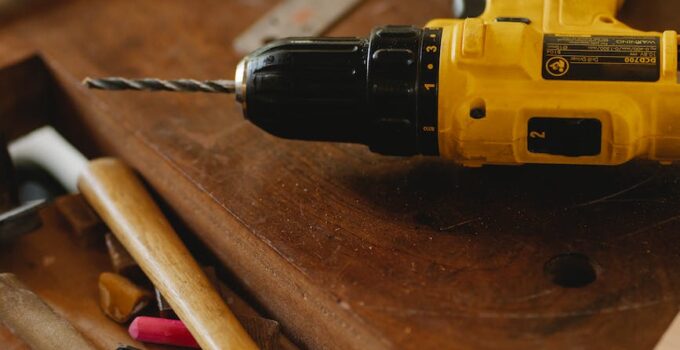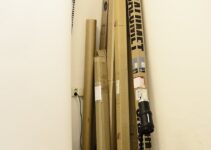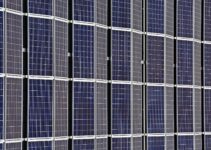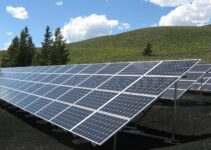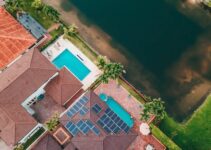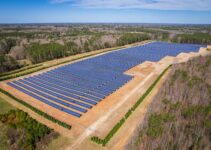Off-grid living has become increasingly popular as people seek to reduce their reliance on traditional power sources and embrace a more sustainable lifestyle. One of the key components of an off-grid system is solar panels, which harness the power of the sun to generate electricity.
But how many solar panels do you need to run off-grid? In this article, we will explore the factors that determine the number of solar panels required for off-grid living and provide expert advice on optimizing your solar panel system.
Understanding the Power Consumption of Off-Grid Living
Before determining how many solar panels you need, it is important to understand your power consumption. Off-grid living typically requires a self-sufficient energy supply to power essential appliances and electronics.
Start by assessing your energy needs by making a list of the appliances and devices you plan to power. Consider their power ratings, usage hours, and the total energy consumption per day.
Once you have a clear idea of your daily energy consumption, you can calculate the number of solar panels required to meet your needs.
Calculating Your Energy Needs: Factors to Consider
Several factors need to be considered when calculating your energy needs for off-grid living. These factors include:
- Location: The amount of sunlight your location receives plays a crucial role in determining the number of solar panels you need. Areas with more sunlight will require fewer panels to generate the same amount of energy.
- Seasonal Variation: If you live in an area with significant seasonal variations in sunlight, you need to account for the decreased solar energy production during certain times of the year.
- Efficiency: Solar panels have different efficiency ratings, which affect the amount of energy they can generate. Higher efficiency panels require fewer panels to produce the same amount of energy.
- Battery Storage: If you plan to store excess energy in batteries for use during non-sunny periods, you need to consider the capacity of your batteries and the additional energy requirements.
By taking these factors into account, you can calculate a more accurate estimate of the number of solar panels needed for your off-grid system.
Determining the Ideal Size of Your Solar Panel System
Once you have determined your energy needs, you can calculate the ideal size of your solar panel system. To do this, you will need to consider the average daily sunlight hours in your location, the efficiency of your solar panels, and the amount of energy you consume per day.
To calculate the ideal size, follow these steps:
- Determine your daily energy consumption in kilowatt-hours (kWh).
- Divide your daily consumption by the average daily sunlight hours to get the amount of energy you need to generate per hour.
- Divide the energy per hour by the efficiency rating of your solar panels to get the total wattage of solar panels needed.
- Finally, divide the total wattage by the wattage rating of each individual solar panel to get the number of panels required.
Remember to account for any seasonal variations and add extra panels if needed to ensure a reliable power supply throughout the year.
Maximizing Efficiency: Tips for Optimizing Solar Panel Performance
Once you have determined the number of solar panels you need, there are several steps you can take to maximize their efficiency and performance:
- Ensure proper installation and positioning of the panels to maximize sunlight exposure.
- Regularly clean the panels to remove dust and debris that can reduce their efficiency.
- Monitor and maintain your system to identify and address any issues promptly.
- Consider using solar tracking systems to optimize sunlight capture throughout the day.
By following these tips, you can ensure that your solar panel system operates at its maximum potential, generating the most energy possible.
Battery Backup: Ensuring Reliable Power Supply Off the Grid
Having a battery backup system is crucial for off-grid living to ensure a reliable power supply during periods of low sunlight or system maintenance. The size and capacity of your battery bank will depend on your energy consumption and the number of days you want to be self-sufficient without sunlight.
When sizing your battery backup, consider the following:
- The depth of discharge (DoD) – the percentage of battery capacity you can safely use without damaging the battery.
- The type of battery – different battery chemistries have different efficiencies and DoD limitations.
- The charging and discharging rates – ensure that your battery bank can handle the required energy flow.
By properly sizing your battery backup system, you can ensure that you have a reliable power supply even when the sun is not shining.
Evaluating the Cost and Return on Investment of Going Off-Grid
While going off-grid can provide numerous benefits, it is important to evaluate the cost and return on investment (ROI) of installing a solar panel system.
The initial investment in solar panels and batteries can be significant, but the long-term savings on electricity bills and the environmental benefits can make it a worthwhile investment.
Consider factors such as:
- The cost of solar panels, batteries, and installation.
- The potential savings on electricity bills.
- The lifespan and warranty of the solar panels.
- The availability of government incentives or tax credits for renewable energy systems.
By carefully evaluating the costs and potential savings, you can make an informed decision about whether going off-grid is the right choice for you.
Frequently Asked Questions about How Many Solar Panels to Run Off-Grid?
Q: How do I determine my energy consumption for off-grid living?
A: Start by making a list of the appliances and devices you plan to power. Consider their power ratings, usage hours, and total energy consumption per day. This will give you an estimate of your daily energy needs.
Q: How does location affect the number of solar panels needed?
A: Areas with more sunlight require fewer solar panels to generate the same amount of energy. If you live in a location with less sunlight, you may need to install additional panels to compensate for the lower solar energy production.
Q: Do I need a battery backup for my off-grid solar panel system?
A: Having a battery backup is recommended for off-grid living. It ensures a reliable power supply during periods of low sunlight or system maintenance. The size and capacity of your battery bank will depend on your energy consumption and the number of days you want to be self-sufficient without sunlight.
Q: What is the return on investment for going off-grid?
A: The return on investment for going off-grid depends on various factors such as the cost of solar panels, batteries, and installation, potential savings on electricity bills, lifespan and warranty of the solar panels, and the availability of government incentives or tax credits.
Evaluating these factors will help you determine the financial benefits of going off-grid.
Expert Advice on How Many Solar Panels to Run Off-Grid
When it comes to determining the number of solar panels needed for off-grid living, it is essential to consider your specific energy needs, location, and available sunlight.
Consulting with a solar energy expert can provide valuable insights and help you optimize your solar panel system for maximum efficiency and cost-effectiveness.
